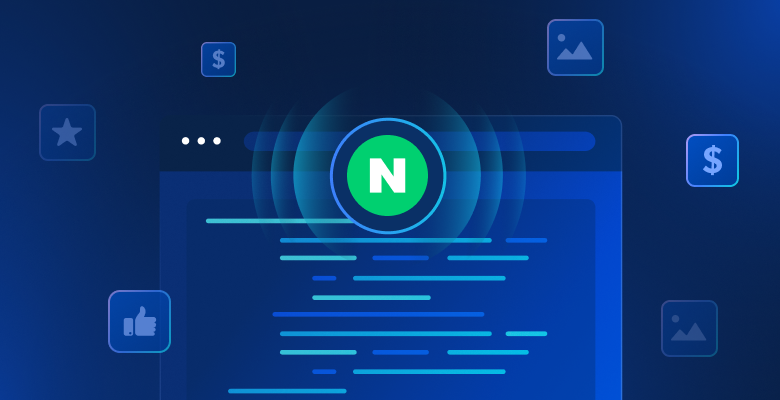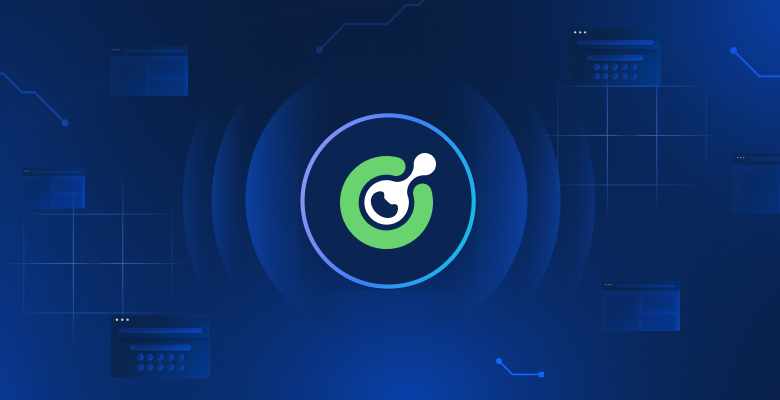In this article we will discuss:
- HTTP proxies – what they are and how they are used
- What’s the deal with SOCKS proxies ?
- What differentiates ‘SOCKS5’ from ‘SOCKS’?
- Why you should consider using Bright Data instead of SOCKS5
HTTP/HTTPS proxies – what they are and how they are used
Web servers and web browsers need to communicate with each other. HTTP/S, or HyperText Transfer Protocol (Secure), serves as a means of retrieving desired information that lives on the web in specific scripting languages such as HTML and CSS. HTTP/HTTPS helps people connect with browsers in order to collect target data from certain browsers. This may include:
- Written text
- Visuals
- Videos
- Web pages
- Geolocation / Geospatial data
Each individual request is individual, meaning that a new session is initiated on a per-case basis. HTTP proxies and HTTPS proxies are purpose-built to serve as an intermediary between HTTP/HTTPS-based browsers, and the requesting party. As with other proxy-based tools, HTTP/HTTPS is meant to provide entities that are looking to collect information an extra layer of anonymity and protection.
What’s the deal with SOCKS proxies?
SOCKS, otherwise known as SOCKet Secure, is similar to HTTP/HTTPS protocols in that they are used in order to connect “clients” with a third-party site, serving as a buffer and a tunnel of sorts through which requests can be safely routed.
The key difference between HTTP/HTTPS and SOCKS protocols lies in the fact that SOCKS was built with the capability of being able to service requests that require high volumes of traffic. This may include things such as:
- Load balancing
- Peer-to-Peer activities
- Music/video/data streaming
SOCKS empowers the user to circumvent geolocation-based restrictions, while maintaining complete anonymity. It also employs Transmission Control Protocol (TCP), which establishes a more stable/secure mode of connection, and delivery over networks. It uses the data equivalent of a “zip file” so that it can transmit a group of data points, related title tags, and other information that is crucial to processing and analyzing the information in question. It also uses end-to-end encryption, ensuring that only the requesting party can download and decipher the data parcel in question. It is also especially useful when attempting to access hard-to-reach open-source data that is being hidden or cordoned-off behind digital boundaries such as firewalls.
What differentiates ‘SOCKS5’ from ‘SOCKS’?
SOCKS is categorized as a layer 5 protocol, meaning that it can only be used to tunnel protocols that are running on and above “layer 5” in the Open Systems Interconnection (OSI) model. The implications of this include the ability to take care of requests of the following varieties:
- HTTP
- HTTPS
- POP3
- SMTP
- FTP
This is chiefly due to the fact that it operates at layer 5 – somewhere between SSL (layer 7) and TCP/UDP (layer 4).
In an attempt to help dispel common confusion, one needs to know that SOCKS currently exist in 2 main formats:
- SOCKS4: On the authentication level, SOCKS4 is not conducive to tasks requiring authentication, while SOCKS5 is purpose-built to handle a diverse assortment of authentication methods.
- SOCKS5: SOCKS5 supports User Datagram Protocol (UDP) proxies, while SOCKS4 does not.
To clarify: UDPs are useful when transferring ‘messages’ or ‘Datagrams’ without having to use handshakes, error checks, or flow controls. This means that it is conducive for low-latency / fast data transfers. But it also has its drawbacks, namely UDP cannot check for ordering/error functionalities meaning it is great when speed, and not error-checking is the main priority. Additionally, UDP operates as part of its protocol, for a time in ‘connectionless mode’, a sort of ‘lawless’ state of being which can sometimes expose systems/activities to exploitation.
Lastly, SOCKS5 is considered to establish a more secure connection as it does so using TCP authentication while employing a fully encrypted Secure Shell (SSH) tunneling methodology.
HTTP Proxies Vs. SOCKS5 Proxies comparison chart
| HTTP Proxies | SOCKS Proxies | |
| How they perform: | HTTP proxies have decent load speeds and are better for managing data transfers based on time rather than quantity. | SOCKS are very quick, making them ideal for internet-based data routing. |
| What they can be used for: | They can be used to cache or filter content and collect data via browsers. | Typically used to stream web content as well as file sharing using peer-to-peer methodologies. Additionally, they can help access targets that sit behind a firewall as they are flexible and not dependent on any one protocol. |
| How secure they are: | Can be used to add an additional level of security between the ‘user’ and the ‘client’. Enabling systems to better protect themselves from malicious external threats. | Do not employ tunnel encryption found in other alternatives and may impact levels of security in the context of certain use cases. SOCKS5 also includes data packet headers decreasing errors but exposing more of your personal information. |
| Integration with tools: | HTTP proxies connect with virtually any tool. | SOCKS5 connects with a more limited pool of tools. |
HTTP and SOCKS5 proxy use cases
SOCKS5 proxy applications
SOCKS5 proxies are protocol agnostic and, as such, can be very useful in their application and usage. This means that instead of simply relying on an HTTP connection, for example, SOCKS5 can go ahead and establish connections using:
- User Datagram Protocol (UDP) – This enables SOCKS5 to establish a more stable connection and transfer content from one party to another more reliably, and securely.
- Transmission Control Protocol (TCP)
Additionally, SOCKS5 is especially useful when dealing with firewalls. In this context, SOCKS5 can help establish a connection between ‘clients’ and ‘servers’ when one party is behind a firewall while using a TCP connection. A good example of this is when a user’s IP is blacklisted by a target site, SOCKS5 is often used in order to circumvent such blockade and gain access to desired target data.
Another popular way to utilize SOCKS5 is on peer-to-peer content-sharing platforms. The reason behind this is that SOCKS5 operates with smaller than average data packets, which practically means quicker transfer/download speeds.
HTTP proxy applications
HTTP proxies can be customized based on a business’s unique requirements. One major HTTP use case is ‘content caching’. What this essentially means is that it enables a reduction in pressure on servers from clients that are requesting the same information on a regular basis (this can be an entire website or specific web pages, for example). It makes the previously retrieved version available locally without creating a new server connection. This works especially well for international Content Distribution/Delivery Networks (CDNs).
HTTP proxies can also serve as a form of “digital bouncer”, deciding which requesters and data packets receive entry to your server/database and which are given the boot. In this context, HTTP proxies are used for network security, especially when internal company networks are connected to the internet, which can increase the possibility of external malicious cyber-threats.
HTTP proxies are also uniquely positioned in a way that can be conducive to better data collection by increasing success rates. HTTP proxies can accomplish this by adapting headers on an as-needed basis to match target site criteria. This may include criteria such as:
- HTTP header User-Agent, e.g., Microsoft Edge: Mozilla/5.0 (Windows NT 10.0; Win64; x64) AppleWebKit/537.36 (KHTML, like Gecko) Chrome/51.0.2704.79 Safari/537.36 Edge/14.14393
- HTTP header Accept-Language, e.g., FR- (French)
Why you should consider using Bright Data instead of SOCKS5
Bright Data offers a fully viable SOCKS5 alternative. The network is fully secured, enabling HTTPS connections to the super proxies located on every continent, enabling lightning-speed responses. Our peer-to-peer network offers access to accurate, consumer-facing data points that are highly accurate. For example, flight pricing as it appears to a real Paris-based consumer.
Bright Data’s super proxy servers help distribute the requests received throughout the different proxy types.
When routing traffic through Bright Data networks, all the data packets enjoy end-to-end encryption using HTTPS tunneling, connecting end-users to target URLs and other information being targeted.
SOCKS5 offers users double encryption, which can sometimes lead consumers to believe that it is “better”. But in actuality, SOCKS5 is an outdated method, and HTTPS offers best-in-class security and data encoding. Companies have grown used to using SOCKS5 but this method is actually typically preferred by entities that engage in illegitimate activities, looking to hide their activities.
Bright Data offers access to a fully-transparent network that is audited by third-party groups, implementing real-time log checks and compliance to ensure that all network activity is legal and compliant.
By maintaining the highest HTTP/HTTPS industry standards, we are not only able to guarantee that your data is secure, but we can also help you avoid “red zones” that can sometimes arise when routing traffic vis-à-vis SOCKS5. These include full error-checking and high speeds with near-zero latency, ensuring that your systems and activities are never exposed to malicious third parties for exploitation.








